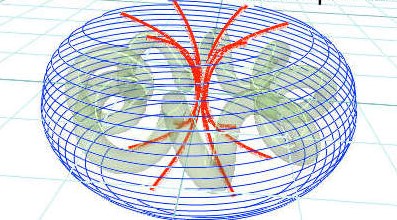
T. Townsend Brown discovered electrogravitics in 1918. In 1923, Professor Biefeld of Denison University suggested to his protégé, Townsend Brown, that he perform experiments which led to the discovery of the Biefeld-Brown Effect, and ultimately, to the electrogravitational energy spectrum.
Electrogravitics is a branch of physics, considered speculative by the community of scientific academia according to Wikipedia. This is seen with the negative Wikipedia article on the biography of the T. Townsend Brown, who discovered the principles of electrogravitics and what is known as the Biefeld Brown Effect.
The best appraisal of T. Townsend Brown to explain his work of electrogravitics can be found at: https://www.ttbrown.com/defying_gravity/21_gravity.html
A scientific paper which presents the Biefeld-Brown Effect: https://electrogravityphysics.com/wp-content/uploads/Musha-Biefeld-Brown.pdf
Another research analysis of the Biefeld-Brown Effect with supporting documentation: https://file.scirp.org/Html/9-7501400_36094.htm
A differing opinion in their analysis of the Biefeld-Brown Effect: https://file.scirp.org/Html/9-7501400_36094.htm
In a brief excerpt written in a 1952 report by University for Social Research; President: Mason Rose, Ph.D.: “The saving of energy in terms of increased efficiency becomes evident if one considers that the actual, usable energy output of our conventional power stations is only about 34% of the total energy input; thermodynamic losses (converting heat to mechanical action in turbines and dynamos) amount to 45%, not counting so-called heat losses in the system. The energy efficiency of the propulsion system discovered by Brown, depending on a highly charged body with a positive leading edge, is close to 100%! T.T. Brown was granted several U.S. patents and his work was ignored!”
What is electrogravitics? As to relevance for a discussion about electrogravitics it delves into theoretical physics fundamentals. Electrogravitics is proposed as a foundational component to the theory of particle mass composition. Electrogravitics is similar to electromagnetics but identifies gravity as the component to subatomic electric fields. This leads to speculation that gravity is a subatomic process rather than a product of mass. With this perspective, electrogravitics holds more validation than electromagnetics as the source of particle charge.
Inasmuch as electromagnetics is the current dictate considered as the primary source of particle charge, it is the supposition of a new theory for gravity that electrogravitics is responsible for what is referred to as electric charge in subatomic matter.
The currently accepted theory for scientific particle charge conjecture has rationalized there is an electromagnetic force of positive and negative charges in element structure. CATTCC (link to cattcc -physics behind paywall) has presented a new postulation. Since magnetism is a process relating to the action of stray electrons in ferrous materials, then, how can atoms of non-ferrous composition hold electromagnetic properties? It is the scientific claim that magnetism is an action of ferromagnetism. Because science has established magnetic action as ferromagnetism, how are magnetic properties able to exist in sub-atomic properties and yet lose their magnetic existence in large quantities of element mass that aren’t ferrous?
This new theory for gravity postulates that gravity is angular momentum in the path of particle motion in accordance with Einstein’s theory of relativity. His explanation of relativity being energy equal to mass times the speed of light squared shows perception of relativity: is traveling at the speed of light.

